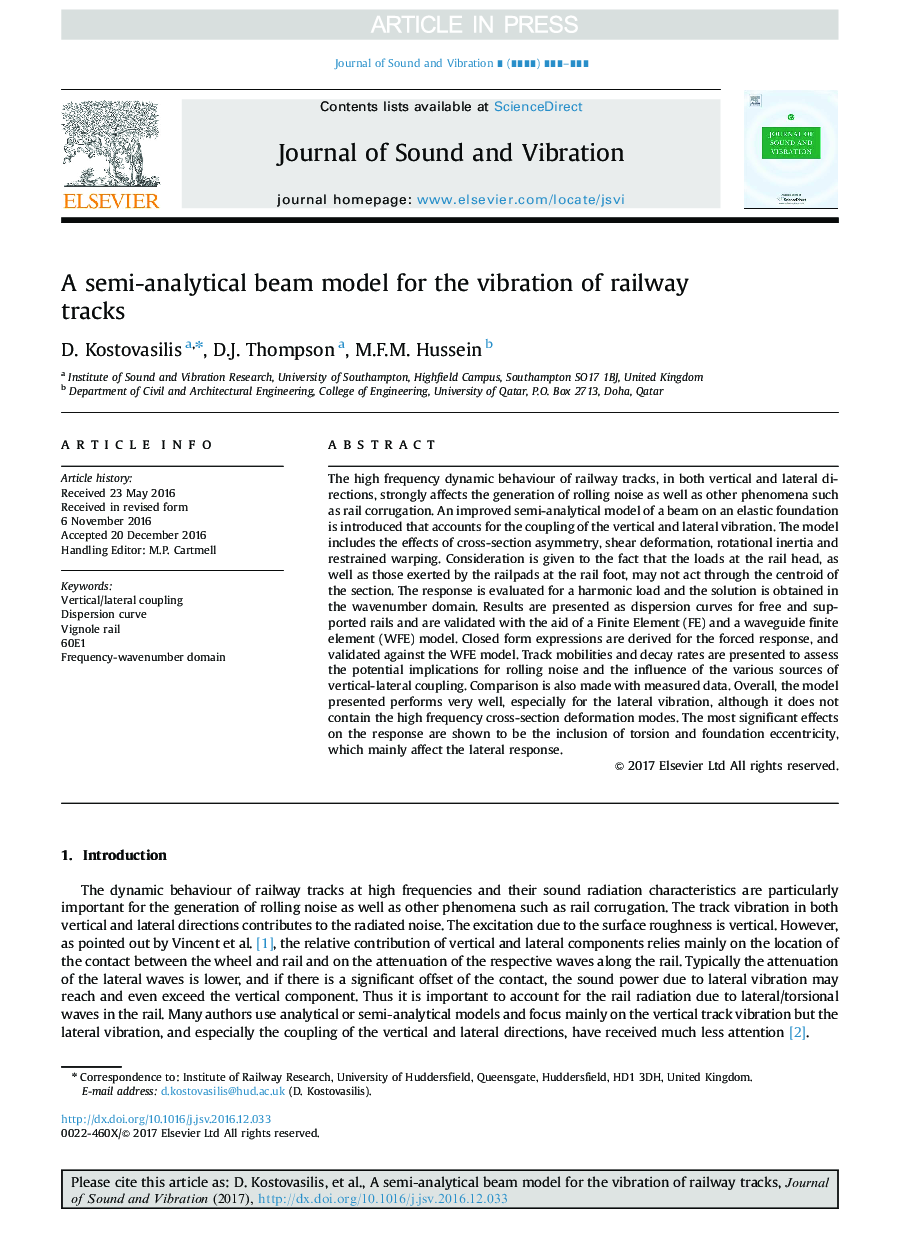| Article ID | Journal | Published Year | Pages | File Type |
|---|---|---|---|---|
| 4924239 | Journal of Sound and Vibration | 2017 | 17 Pages |
Abstract
The high frequency dynamic behaviour of railway tracks, in both vertical and lateral directions, strongly affects the generation of rolling noise as well as other phenomena such as rail corrugation. An improved semi-analytical model of a beam on an elastic foundation is introduced that accounts for the coupling of the vertical and lateral vibration. The model includes the effects of cross-section asymmetry, shear deformation, rotational inertia and restrained warping. Consideration is given to the fact that the loads at the rail head, as well as those exerted by the railpads at the rail foot, may not act through the centroid of the section. The response is evaluated for a harmonic load and the solution is obtained in the wavenumber domain. Results are presented as dispersion curves for free and supported rails and are validated with the aid of a Finite Element (FE) and a waveguide finite element (WFE) model. Closed form expressions are derived for the forced response, and validated against the WFE model. Track mobilities and decay rates are presented to assess the potential implications for rolling noise and the influence of the various sources of vertical-lateral coupling. Comparison is also made with measured data. Overall, the model presented performs very well, especially for the lateral vibration, although it does not contain the high frequency cross-section deformation modes. The most significant effects on the response are shown to be the inclusion of torsion and foundation eccentricity, which mainly affect the lateral response.
Keywords
Related Topics
Physical Sciences and Engineering
Engineering
Civil and Structural Engineering
Authors
D. Kostovasilis, D.J. Thompson, M.F.M. Hussein,
